World Building in Animation: The Scene Behind the Scene
In an essay written for NPR, science fiction and fantasy writer Saladin Ahmed, recalls his attendance to an informal lecture where George R.R. Martin briefly discussed the very early days of Tolkien’s cult popularity. According to Martin, when it came time for college students to carry out the time-honored tradition of plastering posters on every inch of dorm room wall space, “it wasn’t the book covers or some artist’s conception of Frodo that went on our walls. It was the map of Middle-Earth.” A setting that is specifically chosen to act as the physical location for a story’s events often has a much larger role to play than merely acting as a backdrop. Setting informs the personalities of the characters, the choices they make, and the ways in which events unfold, but it also effects how closely themes and ideals within the narrative stick with the reader once the tale has ended. Just as characters evolve and influence the plot through action, so does a rich and vividly imagined world become an accomplice in its creation of atmosphere and identity within the narrative. This is just as true for children’s stories as it is for any other.
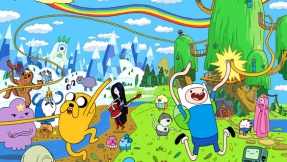 While such ideas have been fully explored in the realms of literature, film, and even video games, with shorter run times and what is generally a more episodic approach to storytelling, the significance of world building in televised animation has often been overlooked. Only with recent releases like Avatar: The Last Airbender and Adventure Time have opinions begun to visibly shift as closer attention is given to the hints of imagined culture and history that leaks through each series’ visuals. Both have been recognized for their thoughtful approach to storytelling and a unique expansion of scope that has broken away from popular conceptions of animation and its storytelling potential. While the critical acclaim garnered by these two series marks a shift in how animation is viewed inside the industry and out, they should not be viewed as the first to push boundaries and produce settings that resonate deeply with their audience. With a steady hand and fruitful imagination, several animators of recent years have gone to great lengths to showcase the abilities of their medium and, consequently, have created a number of settings that are not so easily forgotten.
While such ideas have been fully explored in the realms of literature, film, and even video games, with shorter run times and what is generally a more episodic approach to storytelling, the significance of world building in televised animation has often been overlooked. Only with recent releases like Avatar: The Last Airbender and Adventure Time have opinions begun to visibly shift as closer attention is given to the hints of imagined culture and history that leaks through each series’ visuals. Both have been recognized for their thoughtful approach to storytelling and a unique expansion of scope that has broken away from popular conceptions of animation and its storytelling potential. While the critical acclaim garnered by these two series marks a shift in how animation is viewed inside the industry and out, they should not be viewed as the first to push boundaries and produce settings that resonate deeply with their audience. With a steady hand and fruitful imagination, several animators of recent years have gone to great lengths to showcase the abilities of their medium and, consequently, have created a number of settings that are not so easily forgotten.
Real World Settings
As the two series that I’ve mentioned above illustrate, there is a very strong inclination in animation towards the creation of fantasy settings and storylines. Looking to any series airing at the moment, you will be hard-pressed to find one that doesn’t rely on fantastical elements in some way. However, in between tales of young adventurers and magical girls, there also exists a meager but outstanding corner of animation wholly devoted to realistic settings and the ways in which children conceive their own surroundings. By dealing directly with common experiences associated with childhood in an upfront but lighthearted way, series such as Craig Bartlett’s Hey Arnold! and Disney’s Recess, created by Paul Germain and Joe Ansolabehere, differentiate themselves from others in the industry. Although the real world settings exhibited in both series may lack the same level of detail and creativity present in their more fantastical counterparts, the approach taken by both series nonetheless demonstrates a great deal of imagination and thoughtful planning.
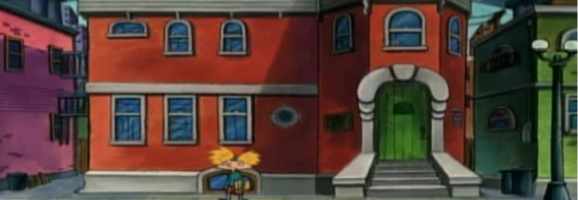
In the case of Hey Arnold!, the series went a long way to differentiate itself from many other series, then and now, by finding its setting in a sprawling, unnamed city that combined architectural elements from New York, San Francisco, Portland, and Bartlett’s own hometown of Seattle. Throughout the series, the Brooklyn bridge appears in several shots, as do lines of brownstone buildings that are reflective of the alternative, grungy atmosphere that Bartlett remembers from his youth:
“Oh, I’m very much a son of Seattle. I’m used to the gloomy weather and fresh air that smells like the sea and wearing layers of flannel and digging the funky old buildings… So I wanted “Hey Arnold!” to have a little of that vibe.”
What results is a city that manages to be threatening, but also welcoming to Arnold and his friends who roam its borders unsupervised and transform the space into a shared playground. The buildings are old and grimy, smoky factories can regularly be seen sitting on the horizon, and patches of green space are so rare that in the episode, The Vacant Lot, Arnold and his friends are forced to take it upon themselves to clean out an abandoned lot so they can play away from the busy road. But it’s also a setting that allows for adventure and imagination to thrive; when the series attempts its version of a bottle episode in Das Subway, it does so by trapping the gang in the bowels of the city’s subway and forcing them to deal with confusing time tables, the presence of questionable train folk, and the fact that it’s long past curfew. Similarly, through Gerald, who is deemed “keeper of the legends,” we’re introduced to the city’s real and imagined eccentricities in the form of urban legends circulated by the neighbourhood kids. These legends define the city as we learn more about its side characters and the ways in which the kids imbue their surroundings with life and character. For example, in Pigeon Man, a long believed tale about a half-man, half-pigeon monster is pulled back to reveal how a local hermit has simply been vilified by children of the neighbourhood who lack understanding.
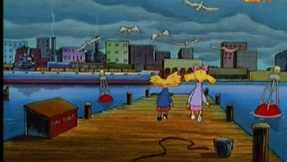 In world building, it’s important that descriptions of the environment appeal to the physical senses of the body. The more detail that is provided for viewers to experience the full physicality of a scene, the greater their immersion in the tale, and compassion for its characters. Emulating Bartlett’s quote above, Hey Arnold! successfully recreates the harsh atmosphere that hangs over a concrete city, as well as the uncertainty of finding yourself lost in the middle of it. As we come to recognize the familiar faces of the city’s postman, Arnold’s boarding house family, and the kids living as his neighbours, however, that carefully constructed urban atmosphere also dissipates to reveal a setting that’s much more comforting underneath.
In world building, it’s important that descriptions of the environment appeal to the physical senses of the body. The more detail that is provided for viewers to experience the full physicality of a scene, the greater their immersion in the tale, and compassion for its characters. Emulating Bartlett’s quote above, Hey Arnold! successfully recreates the harsh atmosphere that hangs over a concrete city, as well as the uncertainty of finding yourself lost in the middle of it. As we come to recognize the familiar faces of the city’s postman, Arnold’s boarding house family, and the kids living as his neighbours, however, that carefully constructed urban atmosphere also dissipates to reveal a setting that’s much more comforting underneath.
Contrasting Hey Arnold’s muted and heartfelt approach to realism, Recess tackles the joyful and carefree aspects of school life in its conception of Third Street Elementary School. Following the adventures of its core group of fourth graders, Recess creates the quintessential school environment with its own set of internally created social hierarchies, cliques, and long-running histories. With the school’s bright yellow brick building standing in the center, and its borders cut off by a surrounding chain-link fence, the setting is certainly a lot smaller and narrower in focus than Arnold’s city, but it hasn’t been made any less memorable because of it. For the students of Third Street, the playground is a vast landscape of intersecting territories, makeshift clubhouses, and grassy sports fields. Overseen by sixth grader, King Bob, who sits atop his throne on the jungle gym and enforces the playground’s ancient, unwritten rules, the setting becomes a self-contained world filled with an assortment of characters ranging from the likes of Hustler Kid and Swinger Girl, to The Ashleys and class snitch, Randall. Although some are given more screen time than others, each contributes to the playground’s internal sense of logic as alliances continually shift and replicate the social politics expected from grade school children.
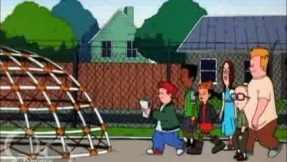 Like Hey Arnold!, the elementary school relies on urban legend and the exaggeration of everyday events to convey its own sense of place. In Teacher’s Lounge, the group tells of their annual attempts to see inside the lounge and discover how the teachers spend their breaks. Each has their own vision of what it must look like: a gym, a high tech lab, or maybe even a place of meditation. Although the results prove disappointing, their imaginations drive them to stop at nothing until the mission is complete. Similarly, when T.J. hears the legend of Tiny Sedgewick, who is said to have been kidnapped by “the pale kids” of Room 51, his descent into the school’s basement transforms an ordinary event into an adventure to uncover one of the school’s many secrets. These mini-adventures highlight how the school’s character and atmosphere stem primarily from the imaginations of the students and the history that permeates its structure.
Like Hey Arnold!, the elementary school relies on urban legend and the exaggeration of everyday events to convey its own sense of place. In Teacher’s Lounge, the group tells of their annual attempts to see inside the lounge and discover how the teachers spend their breaks. Each has their own vision of what it must look like: a gym, a high tech lab, or maybe even a place of meditation. Although the results prove disappointing, their imaginations drive them to stop at nothing until the mission is complete. Similarly, when T.J. hears the legend of Tiny Sedgewick, who is said to have been kidnapped by “the pale kids” of Room 51, his descent into the school’s basement transforms an ordinary event into an adventure to uncover one of the school’s many secrets. These mini-adventures highlight how the school’s character and atmosphere stem primarily from the imaginations of the students and the history that permeates its structure.
In depicting common childhood experiences that audiences of all ages can relate to, both series offer a genuine reflection of what it feels like to be a kid. While the stories aren’t necessarily true in a factual sense, as each series does rely somewhat on idealized scenarios, they offer a truthful reflection of the lessons, concerns, and imaginative freedom that often define childhood. The creation of settings that very closely resemble our surroundings in real life allows animators an outlet to explore adventure found in the mundane, and the child’s ability to imagine their own environments.
Mixed Reality-Fantasy Settings
Taking these ideas a step further, there also exists the much larger subset of animation that finds its settings in a mix of fantasy and reality that purposely pushes the boundaries of what viewers could expect from their real world surroundings. Arguably holding the steadiest foothold on the industry, the creation of worlds that appear typical and every day on the surface, but which also carry discreet fantasy elements underneath, allows for a greater flexibility in storytelling than settings belonging completely to one or the other could achieve. In these types of settings, imagination and the desire for escapism exist alongside everyday situations and familiar experiences.
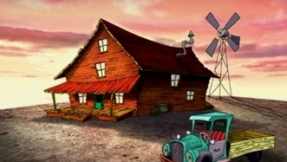 Of course, there’s also the additional thrill of creating a series where the most unusual elements can occur almost naturally. John R. Dilworth’s surreal and darkly comic 1996 series, Courage the Cowardly Dog, exemplifies this perfectly through an infusion of influences drawn from sci-fi, horror, early cinema, and even classic Loony Tunes shorts. Set apart by its grotesque art style and primary setting in the middle of nowhere, Courage begins in the midst of a neglected landscape that might not be immediately familiar to young viewers, but would certainly be recognizable to anyone who has grown up with the cult drive-in movies that defined cinema during the Atomic Age. There is initially very little life presented in Courage’s surroundings as the single two-story house with wooden walls and peeling wallpaper, which sits in the midst of a barren land with only a lone windmill for company, becomes an iconic image for the series that grounds it firmly in reality.
Of course, there’s also the additional thrill of creating a series where the most unusual elements can occur almost naturally. John R. Dilworth’s surreal and darkly comic 1996 series, Courage the Cowardly Dog, exemplifies this perfectly through an infusion of influences drawn from sci-fi, horror, early cinema, and even classic Loony Tunes shorts. Set apart by its grotesque art style and primary setting in the middle of nowhere, Courage begins in the midst of a neglected landscape that might not be immediately familiar to young viewers, but would certainly be recognizable to anyone who has grown up with the cult drive-in movies that defined cinema during the Atomic Age. There is initially very little life presented in Courage’s surroundings as the single two-story house with wooden walls and peeling wallpaper, which sits in the midst of a barren land with only a lone windmill for company, becomes an iconic image for the series that grounds it firmly in reality.
It is a setting that only begins to brim with life once all manner of supernatural creatures rain down on the unsuspecting shack and attempt to get at the family inside. Contrasting the simple, brightly coloured 2D animation that begins each episode as the characters sit in the comfort of their worn down home, the space is very quickly warped into a location that would fit right in with any old horror movie set. In a location that’s just as likely to be laid under siege by ancient spirits and disturbing barbers as giant sentient cockroaches and floating heads, the appearance of these creatures are given an additional ominous air through the incorporation of various mediums ranging from claymation to re-purposed film clips. Collectively, they serve to create a location that feels completely separate from reality despite its episodic beginnings in a setting that otherwise feels fairly ordinary. The end result is an experience that’s pretty unnerving and makes viewers question what sorts of creatures are potentially hanging out on the borders of their own homes.
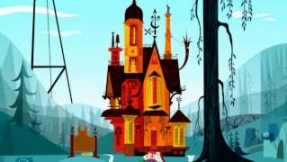 Courage isn’t the only series in this category to do this either. While Craig McCracken’s Foster’s Home for Imaginary Friends introduces a scenario that isn’t nearly as nightmarish as Courage, it actively embraces the bizarre and creates a world which may very well cause some viewers to question the existence of their own childhood imaginary friends. Finding its base in an overt contrast of the absurd and mundane, the setting that McCracken presents to us is one where it’s considered perfectly ordinary to see imaginary friends intermingling with real people in a public setting. Whether the friends of Foster’s are off to the mall, the arcade, or into the woods for a camping adventure, it’s not an uncommon sight to see adults directing or arguing with them, depending on the situation. Even within the main group, we often see twenty-two year old human girl, Frankie, getting into serious arguments with Mr. Herriman, a seven foot tall rabbit in a tuxedo who demands that order be kept, and no one bats an eye. The setting of Foster’s is a world where television commercials can clearly advertise a foster home for imaginary friends and abandoned friends need not worry about such real concerns as being homeless.
Courage isn’t the only series in this category to do this either. While Craig McCracken’s Foster’s Home for Imaginary Friends introduces a scenario that isn’t nearly as nightmarish as Courage, it actively embraces the bizarre and creates a world which may very well cause some viewers to question the existence of their own childhood imaginary friends. Finding its base in an overt contrast of the absurd and mundane, the setting that McCracken presents to us is one where it’s considered perfectly ordinary to see imaginary friends intermingling with real people in a public setting. Whether the friends of Foster’s are off to the mall, the arcade, or into the woods for a camping adventure, it’s not an uncommon sight to see adults directing or arguing with them, depending on the situation. Even within the main group, we often see twenty-two year old human girl, Frankie, getting into serious arguments with Mr. Herriman, a seven foot tall rabbit in a tuxedo who demands that order be kept, and no one bats an eye. The setting of Foster’s is a world where television commercials can clearly advertise a foster home for imaginary friends and abandoned friends need not worry about such real concerns as being homeless.
Thus, Foster’s is made into safe space mainly for friends, but also for Mac, who heads there every day after school in order to escape his dimwitted older brother and overworked mother for a few hours. Most of the series’ episodes take place in the confines of these walls, which shows just how much there is to do inside. Presented as a weird, out of time environment that borrows heavily from Victorian style architecture, brightly coloured ornate furniture sits alongside modern conveniences in a maze of rooms and play areas. Aside from the fact that the house’s Victorian design is probably enough to de-familiarise the space in the minds of young viewers, and set it apart as a surreal location, there’s also the sheer size of it. As Wilt explains in the first episode, there’s a “waiting room, sitting room, living room, parlour…hallways, hallways, hallways, Mr. Herriman’s office, washroom, bathroom, powder room, laundry, dining room, tea room, pantry, kitchen…hallways, hallways…music room, play room…arcade, bedrooms, bedrooms, bedrooms…” and so on. Out of the endless number of stairwells and hallways, each section of the house is given its own colour scheme, style, and purpose that differentiates it from the others. With so much to discover, and a number of unique characters to explore the house with, Foster’s Home imbues the series with an unrelenting energy and sense of excitement that makes it feel inherently magical when compared to anything outside of it.
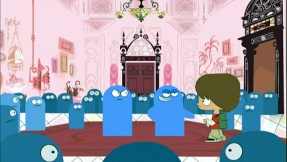 When McCracken asked himself why a kid might create an imaginary friend in the first place, he notes that he conceived them primarily as protectors, companions to combat loneliness, and potential scapegoats for the troublemakers. From the beginning, the creation of Foster’s Home has been wholly infused with these themes. Its existence in a real world setting, but simultaneous rejection of reality, allows animators to fill the house with whatever they can imagine while exploring the genuine desires that drive children to create unique imaginary friends and befitting homes for them.
When McCracken asked himself why a kid might create an imaginary friend in the first place, he notes that he conceived them primarily as protectors, companions to combat loneliness, and potential scapegoats for the troublemakers. From the beginning, the creation of Foster’s Home has been wholly infused with these themes. Its existence in a real world setting, but simultaneous rejection of reality, allows animators to fill the house with whatever they can imagine while exploring the genuine desires that drive children to create unique imaginary friends and befitting homes for them.
As we’ve seen, it’s pretty common practice for animators of all sorts to draw on personal experience and childhood memories when creating new worlds for the next generation to enjoy. Much like the creators who specialize in real world settings, animators in this category know how to tap into the issues and emotions that commonly plague childhood to great effect. However, whether it’s to remind kids of the monsters lying in wait underneath their beds, the friends that they themselves can create, or, in the case of Alex Hirsch’s Gravity Falls, the magical beings hiding out on the borders of the city, these animators are also experts in pushing those familiar experiences into totally new realms of fantasy where real emotion peacefully coincides with the unexpected.
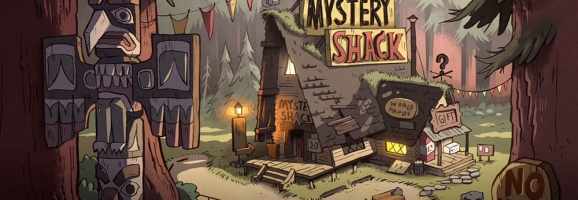
It’s here that Gravity Falls goes the extra mile in creating an immersive world where nothing happens by accident. Opening with a scene where mystery twins, Dipper and Mabel, are on the run from a gigantic unknown creature, it’s explained that the pair were sent to the woods to spend the summer with their Grunkle Stan in order to give them a taste of fresh air. If we ignore the giant monster for a moment, this would initially seem pretty familiar to any kid who has found themselves ripped away from their beloved video game console by a concerned parent on a beautiful summer day. Hirsch has even mentioned that inspiration for the series came, in part, from a number of summers spent vacationing with family in the woods, far off from technology and in a place where he always hoped to see a monster swimming at the bottom of a lake, or a pack of gnomes roaming the woods.
Harnessing these youthful desires, the twins’ physical move away from their home and into the sleepy town of Gravity Falls is like opening a portal into a new world entirely. Although the town looks to be made up of nothing more than an endless field of trees and a few strange residents, it’s not long before the aforementioned gnomes, man-otaurs, time travelling babies, clones, and a hole in the ground that’s said to be bottomless begin to peak out from the surrounding woods. Each episode brings forth a new twist on horror conventions that enlivens the mythology and really exhibits Hirsch’s love for the genre. When recalling his influences from shows like The X-Files and Eerie, Indiana, Hirsch explains how it was their unique approach to the supernatural that inspired some of his own creative decisions:
“even though they would have comedic moments, even though they would have character moments – there was a sincerity about magic. They treated magic not just as a joke but they found a realness to the unreal…I felt like that was definitely missing from kids’ programming.”
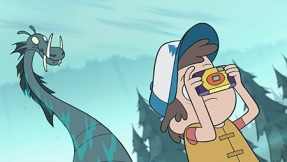 In a pattern of foreshadowing and repeated call-backs to seemingly insignificant details from earlier episodes, Gravity Falls creates an environmentally cohesive world full of mystery, secret codes, and various plots that are still in the process of being uncovered. Were it not for Hirsch’s grasp on the intricacies of his created world and how it works, magical scenes involving rainbow puking gnomes and haunted convenience stores may have proven too silly to really get into. As it stands, the linking of such scenes to the larger setting of Gravity Falls, and the personal lives of its characters, transforms the show into a series of fun, visual metaphors for growing up and doing what’s right.
In a pattern of foreshadowing and repeated call-backs to seemingly insignificant details from earlier episodes, Gravity Falls creates an environmentally cohesive world full of mystery, secret codes, and various plots that are still in the process of being uncovered. Were it not for Hirsch’s grasp on the intricacies of his created world and how it works, magical scenes involving rainbow puking gnomes and haunted convenience stores may have proven too silly to really get into. As it stands, the linking of such scenes to the larger setting of Gravity Falls, and the personal lives of its characters, transforms the show into a series of fun, visual metaphors for growing up and doing what’s right.
Fantasy Settings
Even when dealing with the most magical or surreal world that can be imagined, it’s important that the audience’s willingness to suspend disbelief be engaged. Children may be more readily willing to accept any idea you throw at them, but a look at animation’s most enduring classics will show that even stories that are specifically aimed at the youngest viewers tend to be remembered for their steady development and emotional resonance. When world building, it’s important to anchor ideas of how our own world works into the setting’s framework. Rather than simply creating a world that’s entirely different from our own, many writers choose instead to keep the minute details of their fantasy worlds familiar so as not to completely dislocate the audience from their own surroundings.
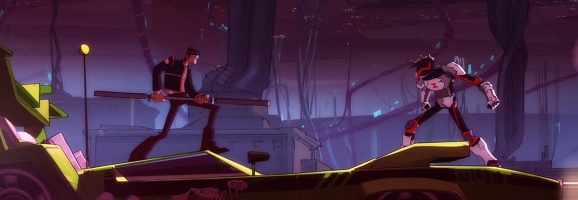
This seems to be especially true when it comes to the creation of fantasy worlds in animation. Whereas Avatar: The Last Airbender finds its setting through Asian influences, and the Canadian series, ReBoot, presents a world based in the data of a computer system, some series choose time travel as their mode of transportation to a world that is separate from our own, but not entirely. By choosing this path, shows such as Chris Prynoski’s Motorcity are able to start with a realistic base that they can then stretch and mould to their own liking. In Motorcity’s dystopian future, the city formerly known as Detroit has been laid waste along with the rest of the globe. It’s said that nothing exists beyond the city’s borders, although no one can remember why. What remains of Detroit has been taken over by Abraham Kane, who has built the sterile and futuristic Detroit Deluxe over top of it. Except, people still live down below in the wreckage of the former city as many have chosen to seek refuge there in order to escape Kane’s tyrannical control, much to his displeasure. So, in order to combat the attacks made on Motorcity by Kane, one of its many car gangs, The Burners, have taken it upon themselves to protect its citizens and dethrone Kane in the process.
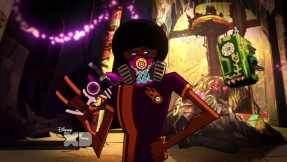 One look at the series makes its influences very clear. Drawing on the visuals of Star Wars, Blade Runner, and the original Speed Racer, as well as an accompanying hard-rock soundtrack that recalls the animated film, Heavy Metal, Motorcity combines style and a dark atmosphere to achieve a look that differs greatly from other series airing at the moment. In the depths of Motorcity, nature and technology meld together in an environment where artificial light is all that’s available. With the utility and power systems that support Detroit Deluxe running directly through the underground city, people below have only managed to survive by intercepting the pipes and gaining what they need from them.
One look at the series makes its influences very clear. Drawing on the visuals of Star Wars, Blade Runner, and the original Speed Racer, as well as an accompanying hard-rock soundtrack that recalls the animated film, Heavy Metal, Motorcity combines style and a dark atmosphere to achieve a look that differs greatly from other series airing at the moment. In the depths of Motorcity, nature and technology meld together in an environment where artificial light is all that’s available. With the utility and power systems that support Detroit Deluxe running directly through the underground city, people below have only managed to survive by intercepting the pipes and gaining what they need from them.
Nevertheless, despite living in a grimy environment where buildings are always on the verge of collapse and attacks from Kane’s seek-and-destroy deathbots are a daily occurrence, a vibrant community of engineers, artists, mechanics, warriors, larping enthusiasts, and an assortment of car gangs has grown in the leftover destruction of Motorcity. Moreso, they’ve managed to use the scraps of past civilizations to their benefit. While cars have been banned from Detroit Deluxe, old car factories and parts coat the landscape underneath. By digging through these mounds of scrap, the Burners are able to construct powerful machines to defend themselves and traverse Motorcity’s immense network of power lines and data cables. Although the world created by Prynoski is built on top of a real location, and subsequently draws some of its characteristics from that spot, Motorcity’s dystopian future pushes far beyond its realistic base to produce a world with its own unique culture, history, and dynamic. While the characters may deal with concerns that we can all relate to, they also must fight against a force that would feel out of place in either of the other world-types that I’ve discussed.
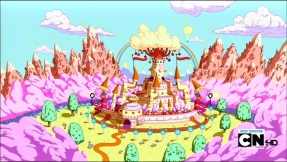 Adventure Time also follows this path and, as I mentioned earlier, is a series that’s garnered a great deal of attention because of it. Transporting viewers to the Land of Ooo, Adventure Time introduces what is probably the happiest and most seemingly carefree post-apocalyptic world to ever exist. Filled with magical monarchs, singing candy people, dungeons, mountains, and portals to other realms, the world created by Pendleton Ward is one where adventure is always just around the corner from our heroes, Finn and Jake’s, tree house. In the Land of Ooo, the spirit of curiosity and adventure reign as characters are literally capable of going anywhere or doing anything, whether that means saving princesses from the Ice King’s clutches, embarking on a Dungeons & Dragons inspired quest, or going to great lengths to cheer up a crying mountainside. With a fairly simplistic premise, and charming animation that relies on vibrant, cheerful visuals, Ooo balances child-friendly fantasy and darker story elements in a way that has caused voice actor, Tom Kenny, to liken it to being this generation’s Yellow Submarine.
Adventure Time also follows this path and, as I mentioned earlier, is a series that’s garnered a great deal of attention because of it. Transporting viewers to the Land of Ooo, Adventure Time introduces what is probably the happiest and most seemingly carefree post-apocalyptic world to ever exist. Filled with magical monarchs, singing candy people, dungeons, mountains, and portals to other realms, the world created by Pendleton Ward is one where adventure is always just around the corner from our heroes, Finn and Jake’s, tree house. In the Land of Ooo, the spirit of curiosity and adventure reign as characters are literally capable of going anywhere or doing anything, whether that means saving princesses from the Ice King’s clutches, embarking on a Dungeons & Dragons inspired quest, or going to great lengths to cheer up a crying mountainside. With a fairly simplistic premise, and charming animation that relies on vibrant, cheerful visuals, Ooo balances child-friendly fantasy and darker story elements in a way that has caused voice actor, Tom Kenny, to liken it to being this generation’s Yellow Submarine.
Despite the series’ easy going and playful approach to storytelling however, recent seasons have slowly begun to expand on the mythology of Ooo and introduce elements that hint at a much larger timeline of events. Although never focused on for too long, the appearance of old, rusty cars and collapsed skyscrapers in the background, along with frequent reminders that Finn is the last human in existence, imbue the series’ world with a sense of history and additional depth that surprisingly fits right in with the setting Ward has chosen. Scattered in between Finn and Jake’s various adventures are episodes that provide glimpses of barren wastelands and a war-torn past that preceded the building of the Candy Kingdom by ages. With what has been called “The Great Mushroom War” gaining more prominence as the series goes on, Adventure Time’s rich and magical world has been entering territory that’s a bit more heartfelt and bittersweet than earlier episodes would have ever alluded to. The main focus of the series may still rest on exploring this surreal world and showcasing the friendship of Finn and Jake, but the small revelations made on Ooo’s past, and its modest connections to our own world, make it just recognizable enough for viewers to suspend disbelief and immerse themselves into the series’ framework.
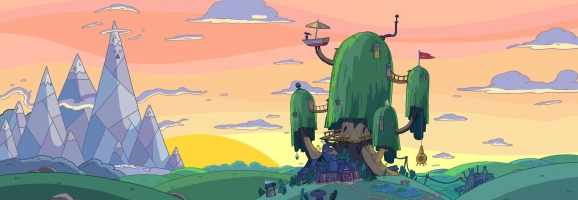
World building, in its purest form, is the creation of a new, fictitious world made from the little details that collectively form history, geography, and culture. Whether those details come directly from the writer’s personal experiences, their own mind, or some mix of the two, world building allows the writer to present a new set of circumstances to their audience that, hopefully, encourages them to take part in its creation. Although the writer will generally have more knowledge about the world than initially let on, successful world building avoids info-dumping and, instead, offers just enough info to point the viewer in the right direction before allowing them to explore on their own. It’s this guided interaction between viewer and the created world that immerses the viewer, endears the characters to them, and ultimately creates a memorable experience.
Given the time constraints imposed on animation, both in production and in airtime schedules, it’s especially important for animated series to maintain that balance in their creation of interesting settings and concepts, while also ensuring that they keep the attention spans of their audience in mind. This, in part, may explain why animation is so inclined to create numerous fantasy, and mixed-fantasy, worlds while only producing a meager number of series with more realistic settings. As I’ve touched on, fantasy and mixed-fantasy settings offer opportunities for more flexible storytelling that aren’t restrained by realistic concepts. Series with realistic settings can be just as creative and imaginative in their exploration of realistic concerns, but it takes a particularly talented animator to pull it off in an entertaining way. With recent allegations that the animation industry is merely interested in appealing to young boys who like goofy, random humour, it remains uncertain how perceptions of animation and its storytelling capabilities will change in the future. Nevertheless, it’s quite clear that the medium is capable of a lot more than it’s given credit for.
What do you think? Leave a comment.
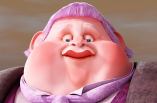
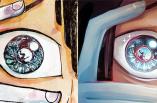
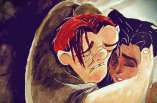
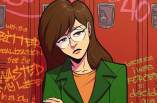

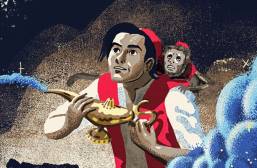
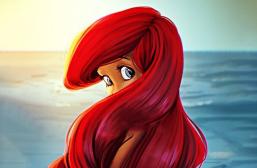
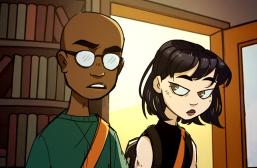
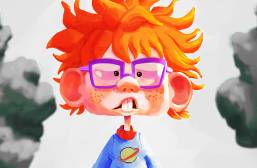
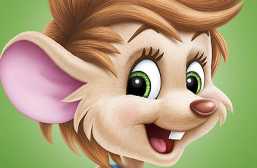
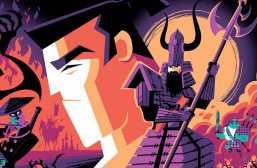
Creating a strong setting and concept comes down to the passion I think. If somebody doesn’t really care why they do something then they’re not going to do it very well. I remember John Kricfalusi (Ren & Stimpy creator) complaining that most animation was being churned out factory style (he was referring to Scooby-Do and Hanna-barbarera stuff).
He said the guy doing the drawing, isn’t the guy who does the writing, who isn’t the guy who is doing the editing, and none of them are the guy that wanted to make more Scooby-Do cartoons, but that was their job. With Ren & Stimpy, he wanted to be in control of all of it and everyone involved to love what they were doing.
Also reminds when you were kid doing homework. You’d resent every moment you had to do homework. Procrastinate until the last night before it was due. And most of it is probably forgotten now anyway. But if you got homework on something you were really interested in you’d spend hours on it. Your mum would have to drag you away from it for dinner time. You’d stop doing everything else because you WANTED to work on this.
It’s a failure of modern education that kids aren’t given homework they’d be passionate about.
I think that designers may be more willing to take risks on new ideas that in the last few years we haven’t really seen. Great era for animation or the creative industry as a whole.
This has been a terrible generation for animation as a whole. Sure there have been some great titles, but it pales to the innovation and sheer number of animation productions in the previous generation.
There will always be passionate people to keep the art alive, even if others don’t~
Lack of passionate people is not the problem at all.
Nice writing. I personally believe we start to care about the fictional world only after we begin to see how it’s like ours.
Thank you! I agree. Without those connections, it would be difficult to really get attached to anything going on in the story. We have to be able to relate.
Exactly. A great world makes one feel as if they’ve been there.
The whole article is really interesting. I work in the games business and we are struggling the same things as the animation business. We want better teams, we want better individuals to form a great team. We want less direction and more freedom. But in the end, the only real thing that matter for the company is profit because without money, the company closes it’s doors. Each company should follow the model that fits it the best. Not always trying to copy other companies that know how to do their things but not you. Creativity is essential. It is possible to have great creators with every model. The most important thing is to treat those guys with respect and allow them to have some freedom and still being to show them the way to follow.
Nothings wrong with some form of structure in a production company, as long as people are given enough room to be creative and spread their wings that is.
I think that there must be a balance, while it is true that this art form need a sense of freedom in order to be innovative and successful, they are also a business, because that’s what allows companies to keep producing movies…
The best way to run a company is to have a producer who is a visionary and under him are the creative people who are free to express their dreams. They come together once a week to collaborate the many ideas and the visionaries job is to say yes or no to ideas and to make it work.
Initially I was a little disappointed that this article wasn’t about set-building and stop-motion animation, but that’s the fault of my preoccupations, not yours. I thoroughly enjoyed reading this, and not just because of the numerous references to cartoons from my childhood; I watch most of the current shows you mention, too. Titles like ‘Avatar’ and ‘Adventure Time’ which throw in the odd nod to a wider mythology always go down well with me, in no small part because they open up scope for further stories or spin-offs.
I can see why that would be disappointing. I wouldn’t mind reading an article on that topic myself! But I’m very glad to hear you enjoyed it. Having just started those two series recently, I was surprised with how seamless, but effective, those nods to greater mythology were. Watching them as they slowly expand and build upon their initial ideas is definitely part of the fun, I feel.
I love this topic, Jessica, and what you wrote. The world must touch, hold and weave into the story and its characters. When it does, it can transport the viewer with a clarity that can be magical.
Every place has a personality of its own, and it gives rise to unique attitudes and beliefs.
I find that, in a well designed world, when you take the time to develop your setting, plots and characters emerge by themselves.
I’ve noticed the same thing. Setting often forms the core of the piece and opens up so many unique possibilities for storytelling. I’m always impressed when I see a work exploring the influence environment had over its characters. There’s so much rich material in that alone.
Thank you! I’m glad to hear you enjoyed it. A well developed setting makes it much easier for viewers to get immersed, but it also makes recalling the setting and story that much more powerful. I know when I think back to some of the settings of my favourite series growing up, all of the adventures, characters, and fun that I had watching them come right back to me.
The best animations are those that handle their world as though it were a character. Places have personality and the best writers get that.
Setting is such a key component to the tone of a story it bugs me when people shrug it off as though it were no more than the shoebox used to house a first grade diorama of the Cretaceous Period.
Writing isn’t taking snapshots, it’s orchestrating a moving picture of the grandest scale.
Speaking about writing, one of my favourite setting-rich books is ‘Troll Fell’ by Katherine Langrish. It is steeped in sensory language and every scene has been written with careful thought of the tension it creates and the emotions it brings out.
“Duncton Wood” – you will come to know every single inch of the forest as the moles do. The leaves, the ground litter, the tunnels, the trees, the Stone, the changing feel of the earth…
“Shadow Country” – the setting, the Everglades in historical Florida, saturates the entire story. It shadows it and shapes it and pervades all that happens. The story and the setting are inescapably linked.
I favor novels in which the setting is so leading, becoming a character. In HOUSE OF LEAVES by Mark Z. Danielewski, the house itself was in many ways the main character. I found that novel really awesome to read.
Yes! I couldn’t agree more. Even when looking at works of the same genre, the settings and characteristics of each piece can make them feel entirely separate from one another. As a visual medium, animation really has a lot of space to convey the different personalities of each location, and animators would do well to pay attention to that.
To me, world building is where the creators and writers are most able to flex their literary muscles and creativity and experiment with fascinating concepts.
I would say, in a lot of cases, setting forms the core of a piece and really influences the strength of the work as a whole. If a writer doesn’t have good world building to back them up, the most interesting concepts can easily fall apart. It’s important to flex those literary muscles!
Fantastic analysis. The setting of a piece can very often be under-represented and doing so can often result in a weaker piece for it. It is important to keep thing in focus when crafting a piece.
Thank you! I definitely agree. Setting plays such a tremendous role in storytelling and it’s so important that writers of all sorts keep that in mind.
Character creation and development to building a whole world. More articles like this.
I like the thought of the world having a sense of change, movement towards some altered state. It’s THIS now, but it used to be THAT, and it’s on its way to THIS future.
A sense of history as motion… Nice.
I like this a lot. It’s really precisely detailed and rigorous which is always great to see. The stuff about a setting being constructed not only physically or through its historical events but also through its mysteries, urban-legends and hidden knowledge (Recess and Hey Arnold) was really great.
Also incidentally I’d never heard of Motor City before but it sound exactly like something I’d love! I’ll check that out pronto so thanks for the tip.
I, like so many others, have never really looked at world building in such a detailed fashion. Of course I know how important it is and the kind of role it can play – or fail to play – in a story, but yea, great content!
I just love this article.
Awesome post, and one I needed to read.
Great article, so much detail and it was good reading about shows I watched as a kid, ones I had completely forgotten about!
Wow, this article is amazing. It really opens my eyes to the world of animation and how iconic the landscapes become rather than the characters. Though-invoking to say the least.
Jeez, girl this article is really well written! Your handling of Hey Arnold in particular is really spot on. These are the kinds of things I think about, world building, and I’m pleased that you handle the topic with a lot of care and intelligence. Really good job.
I quite enjoyed your article. I recommend a New Zealand author, graphic artist and academic, Dylan Horrocks, who has been writing about world building. He has an article entitled “The Perfect Planet” (available online if you Google search it), in which he speaks of a lot of technical stuff related to the building of a fictional world, but also about the centrality of world-building not only in fantasy, but in literature at large. Of course, he talks about Middle Earth (he’s a Kiwi, after all). But there are some very interesting things in his article about the narrative value of panels in comics books.
Once again, good job with this article.
Loved the article. Would love to see you discuss setting in anime, specifically Hayao Miyazaki films. His style of film really focuses on setting, not only in animation but the development of the story and its characters.
Great read! I’ve always been enamored with backgrounds in animation and love to see some breakdown through your article.
I do feel that there’s something wonderful about more simplified backgrounds as well. Think Batman: The Animated Series. There are a lot of blank walls in those backgrounds and sometimes just solid colors! While this isn’t as interesting to look at as the texture-filled world of Courage the Cowardly Dog, it certainly has it’s own dark and dreary appeal that is very fitting for that take on Gotham.
Worldbuilding’s a real challenge, at least for me. I always respect those creators who manage to craft a cool fantasy world while also giving characters their due. I’m trying to write my own story and I’m realizing that worldbuilding is hugely about pacing. Even if you’re only giving a bunch of small details early on, you really shouldn’t bog the story down with tons of small tidbits of information. I realize now that’s an info-dump in disguise. You’ve gotta spread it out. Maybe what it really takes is discipline, to hold back the information and reveal the answers only when the story requires it.
I hate it when books and films have great setting and worlds that are presented but info dumping completely ruins it. The best loved books and movies dont do that. Take Harry Potter as an example. Info dumping is never a problem and the pacing is just perfect.
Great article, I’ll have to check out some of the shows I haven’t seen yet. Personally I think the most interesting examples of this more subtle style of world building are cases where the setting is hinted at being slightly (or in some cases significantly) darker than the characters seem to realize. Adventure Time is probably the most obvious example, and most of my favorite moments in the show are when particularly nasty remnants of Ooo’s past pop up to wreak havoc, like the Lich, or when character’s who lived through the apocalypse relive their experiences.
What are some current TV series set in realistic worlds?
Also, you say:
“animation is … inclined to create numerous fantasy, and mixed-fantasy, worlds while only producing a meager number of series with more realistic settings. As I’ve touched on, fantasy and mixed-fantasy settings offer opportunities for more flexible storytelling that aren’t restrained by realistic concepts. Series with realistic settings can be just as creative and imaginative in their exploration of realistic concerns, but it takes a particularly talented animator to pull it off in an entertaining way”
Can you think of some examples of shows with fantasy settings that address real concerns in realistic ways – as opposed to addressing realistic concerns abstractly, like courage acting against his cowardice to save muriel?
Great article! I’d never heard of Motorcity, and I’d forgotten about Hey Arnold. Just as a point of interest, though I imagine you already know this, a friend recently told me that Helga’s mom is an alcoholic. It amazes me some of the stuff they deal with in that show by showing it through the perspectives of kids.
Also, I found your use of interviews and quotes from the creators of the shows particularly interesting. I might try to remember this when I write my future articles (well, after the next two, which I have planned), so thank you!
Lastly, you might find this author’s discussion of subcreation interesting (I did):
https://the-artifice.com/making-of-middle-earth-and-its-mythos/
Just wow. This is a wonderful article. I think that the shows you chose to focus on were spot on. I look forward to reading more article from you.
I’m a little late to the game here, but I was rereading this article and I have to say; your attention to a very indirect yet necessary part of Animation is fantastic. It’s easy to take for granted a world that is presented to you, especially one that is considered cartoony and supposedly aimed at a younger demographic. Your examples are rich and the analysis brings a new perspective on how each of these shows work as a whole. All in all, an awesome article!
During your research, did you find an animated world that may have gotten in the way of its respective show’s philosophy? You spoke of settings needing to provide just enough detail, but so much to overload a viewer in order to really explore the universe they’re presenting. Have you run into shows that go over the top in explaining a world?
As a writer of fiction I was aware that settings, backgrounds and environments play important roles from creating moods to developing characters. It was interesting how the author of this article brings up how backgrounds also reflect what the creators bring with them from their childhood experiences to a topic that gives the audience something to think or discuss. Perhaps I have not taken notice of these things as a writer because I have been looking at backgrounds (from literature to movies and video games) more from an audience perspective.